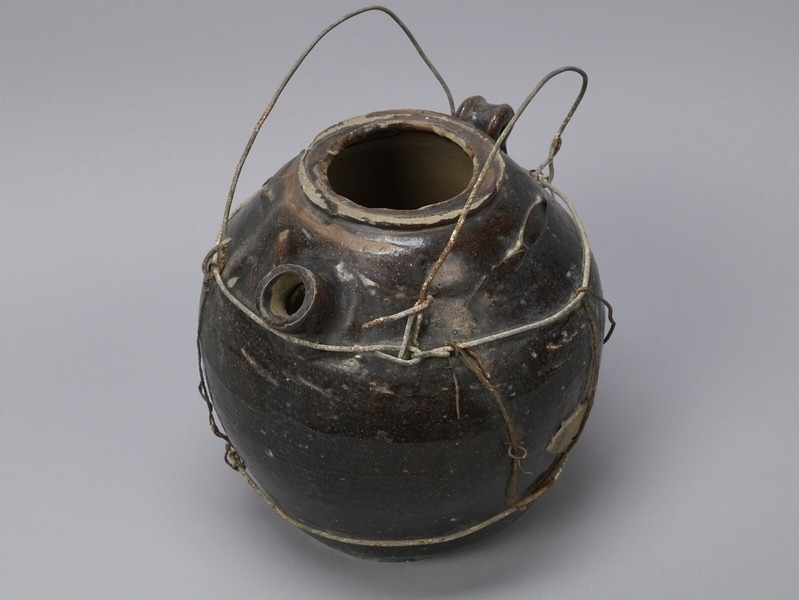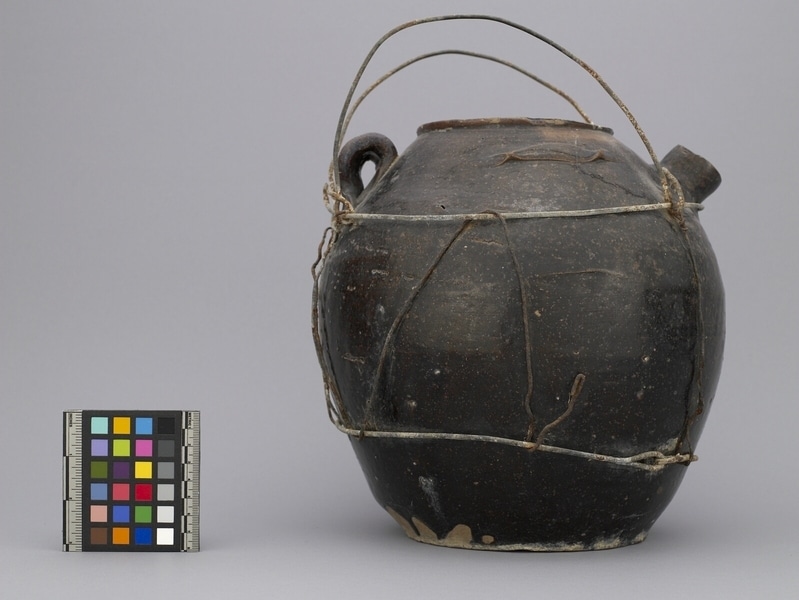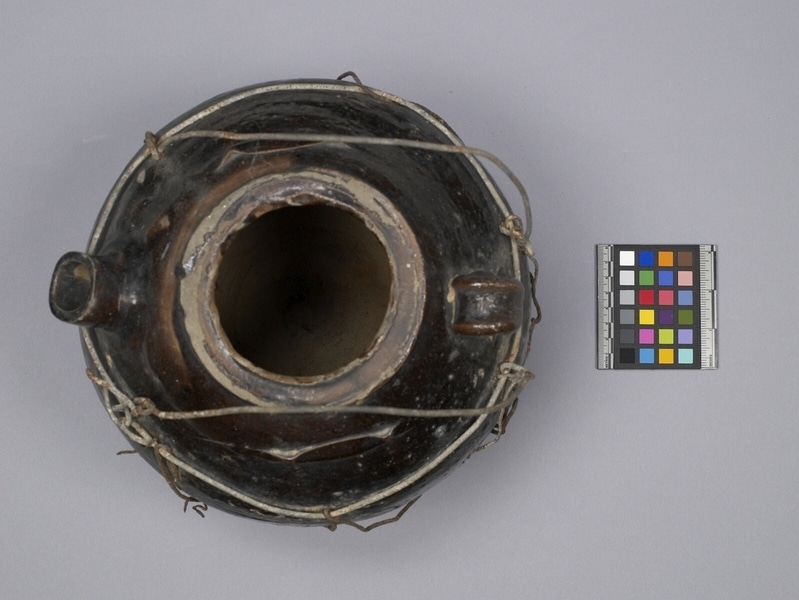Teapot Item Number: Edz1053 from the MOA: University of British Columbia



Description
Round, dark brown teapot with a short, circular spout opposite a small ceramic handle. Metal wire is strung around the centre of the teapot; two wire handles run parallel to each other, attached to the metal rigging at the front and back of the teapot.
History Of Use
When the economy of Tsuen Wan was still based on agriculture and fishing, such teapots were commonly used to carry tea to workers in the fields, especially at the rice harvest. At 10.00 they would receive rice and tea, and at 2:00 they would receive rice porridge (congee) and tea. This teapot should have a lid, and a small teacup inverted over the spout. After the mid-twentieth century the New Territories of Hong Kong began to undergo fundamental changes. The people who had been settled there before 1898, when the British colonizers claimed the area, began to give up rice agriculture and coastal fishing, turning instead to wage labour and increased employment overseas. By the end of the century, educational opportunities leading to the possibility of white-collar work also increased, together with western influences. These changes meant that objects and clothing once useful and appropriate were no longer needed and generally were discarded. Some were saved by their owners, who sometimes were willing to donate them to museums, sharing, also, their knowledge of how they were made and used.
Narrative
As Hong Kong’s New Territories modernized it was common for people to give up objects that were no longer useful. Rice agriculture was given up in Tsuen Wan after World War II, although local people continued to grow vegetables and to raise pigs to sell.
Item History
- Made in Tsuen Wan, Hong Kong, China
- Collected by Elizabeth L. Johnson during 1979
- Owned by Heng-faat Chan
- Owned by Elizabeth L. Johnson before March 17, 1980
- Received from Elizabeth L. Johnson (Seller) and Museum of Anthropology Shop Volunteers (Funding source) on March 17, 1980
What
Who
- Culture
- Chinese: Hakka
- Field Collector
- Elizabeth L. Johnson
- Previous Owner
- Heng-faat Chan and Elizabeth L. Johnson
- Received from
- Elizabeth L. Johnson (Seller) and Museum of Anthropology Shop Volunteers (Funding source)
Where
- Holding Institution
- MOA: University of British Columbia
- Made in
- Tsuen Wan, Hong Kong, China
When
- Collection Date
- during 1979
- Ownership Date
- before March 17, 1980
- Acquisition Date
- on March 17, 1980
Other
- Item Classes
- ceramics
- Condition
- fair
- Accession Number
- 0610/0023